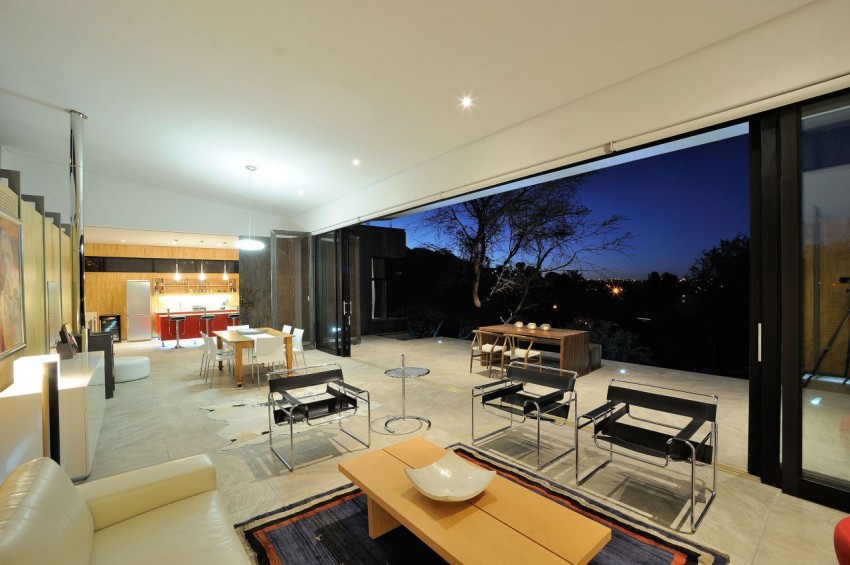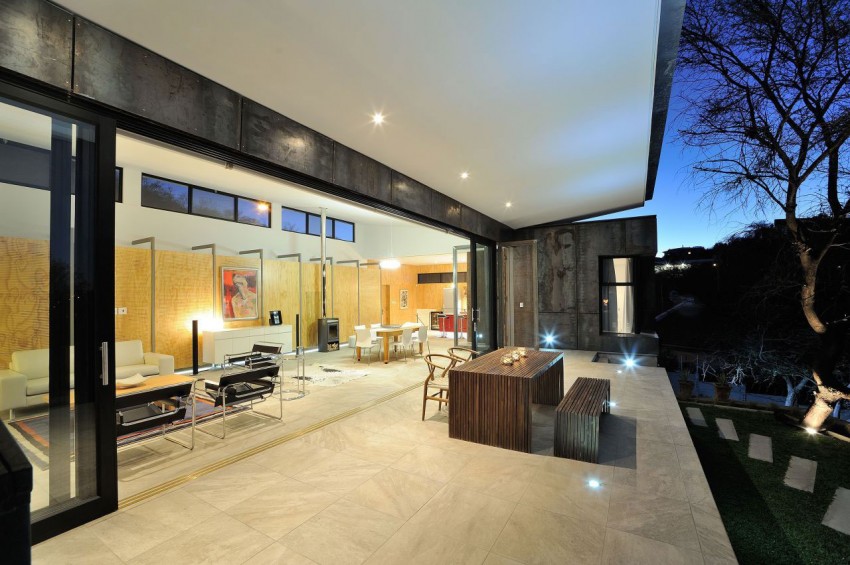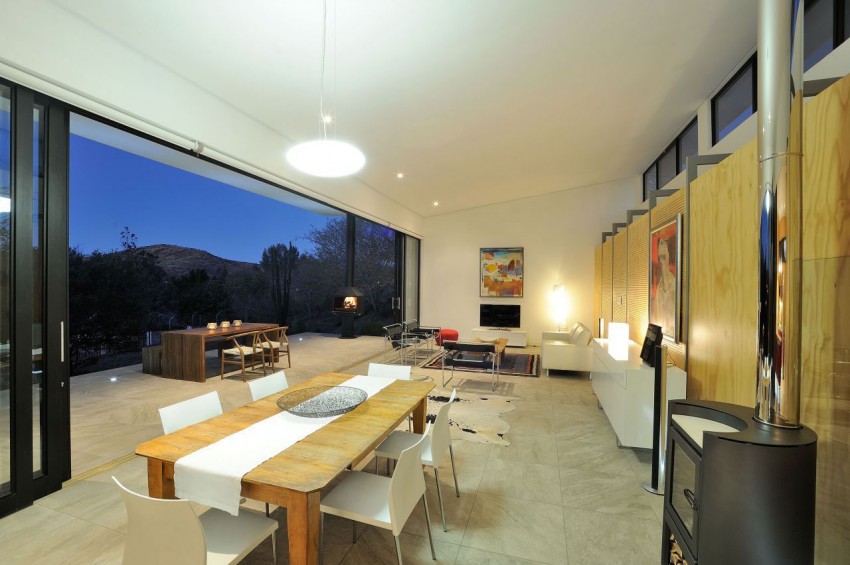10 Ossmann Street is a private residence designed by Wasserfall Munting Architects and is located in Windhoek, Namibia.
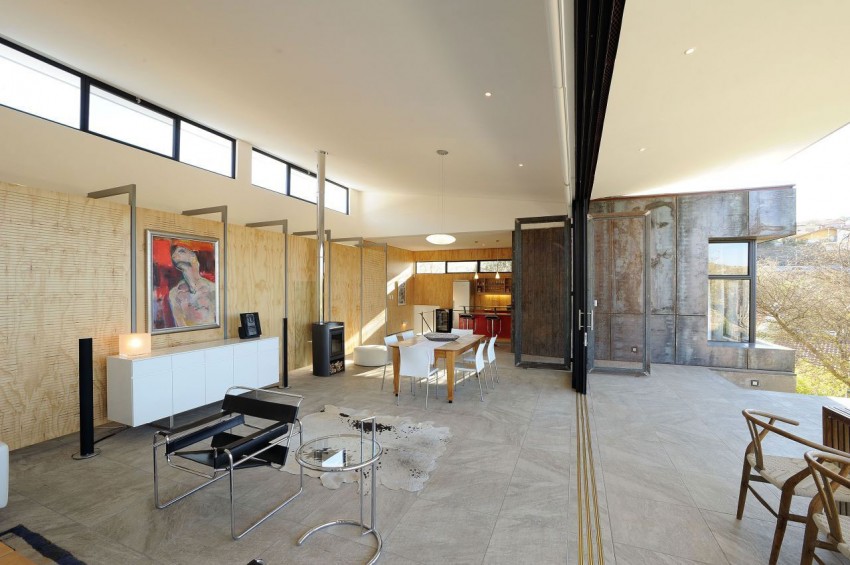
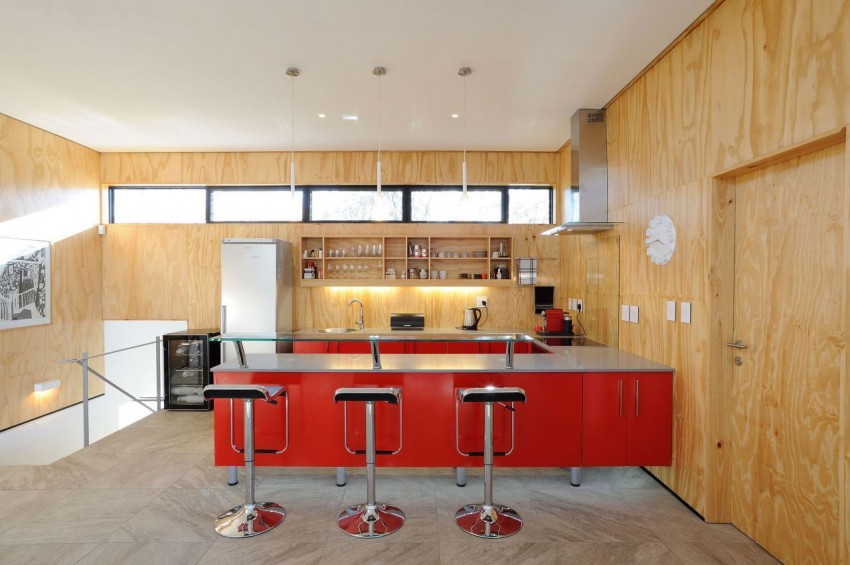
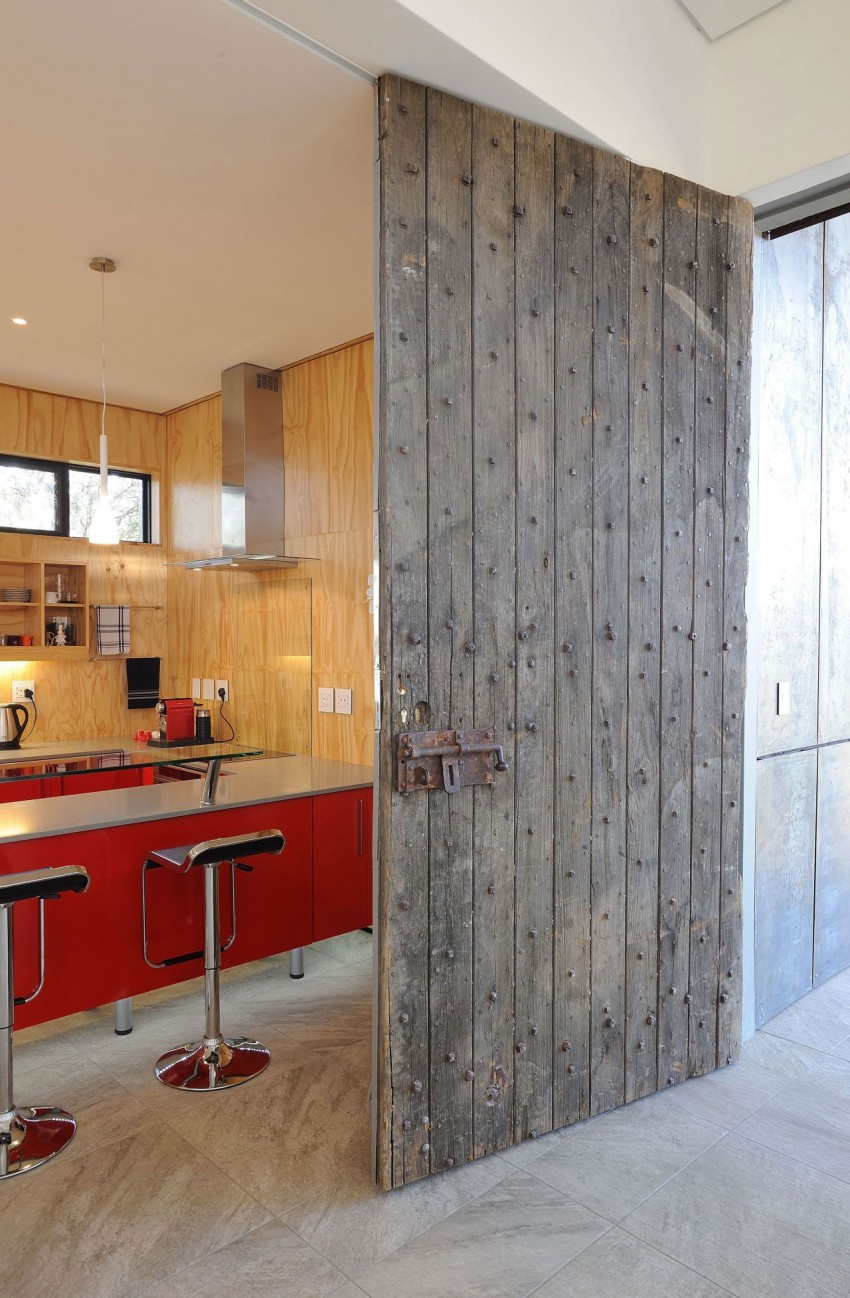
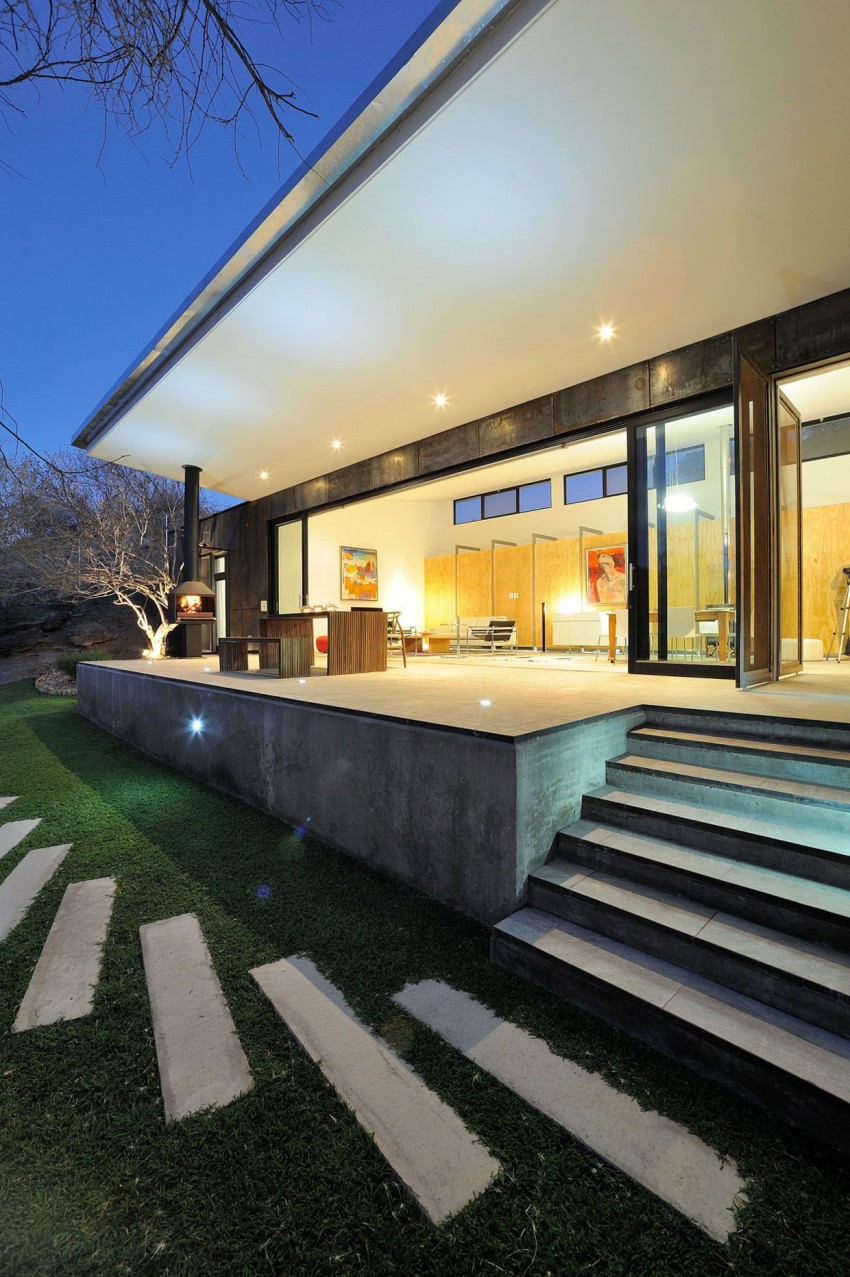
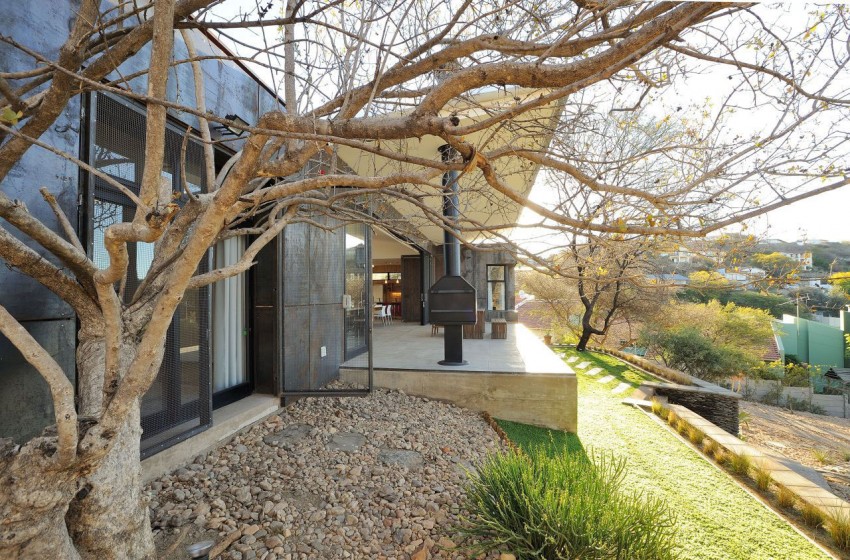
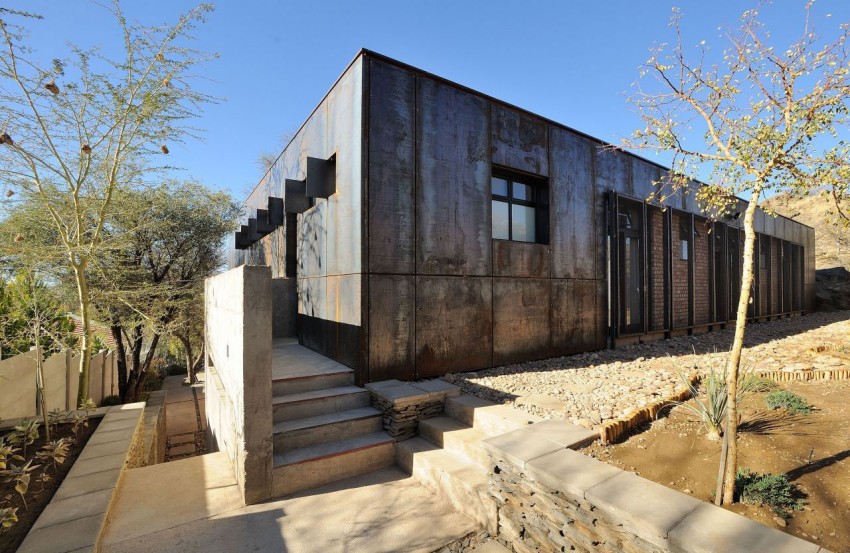
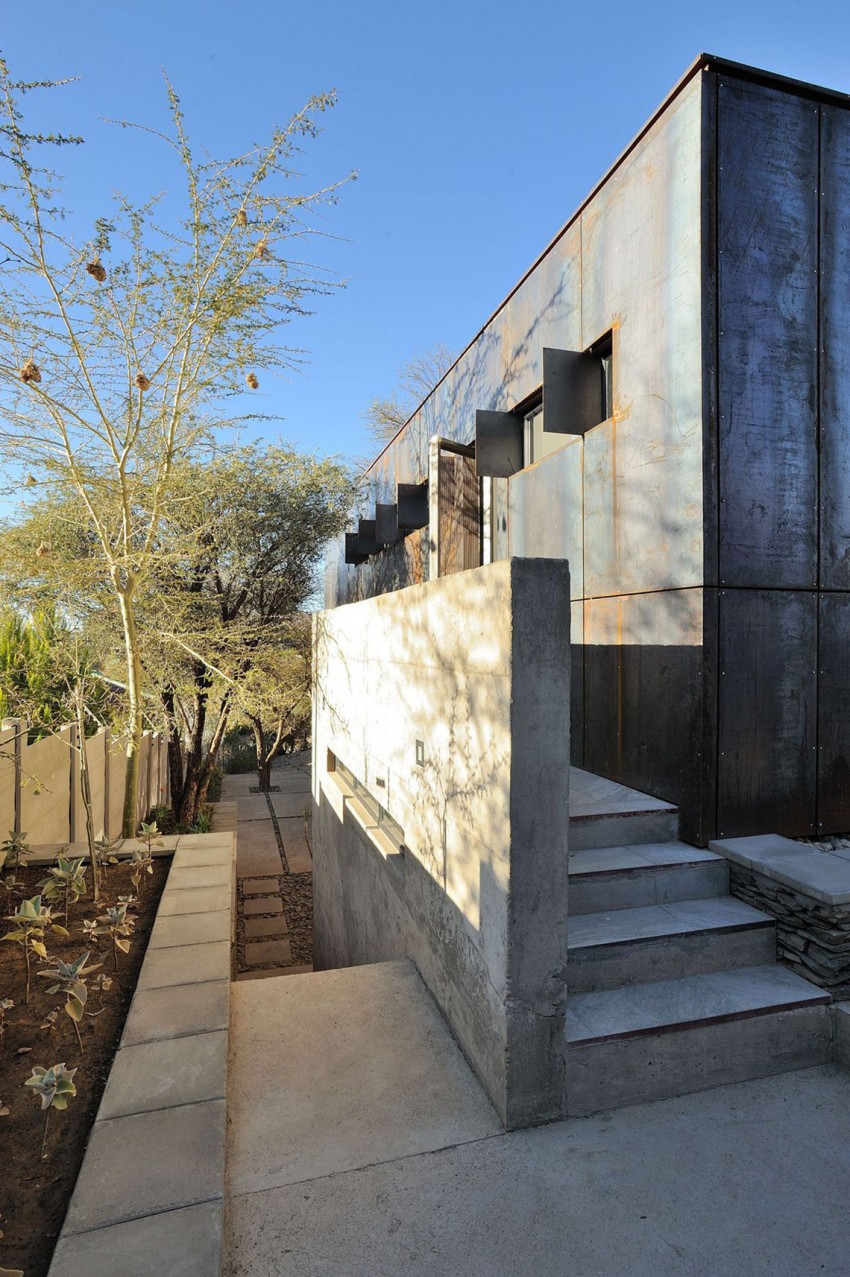
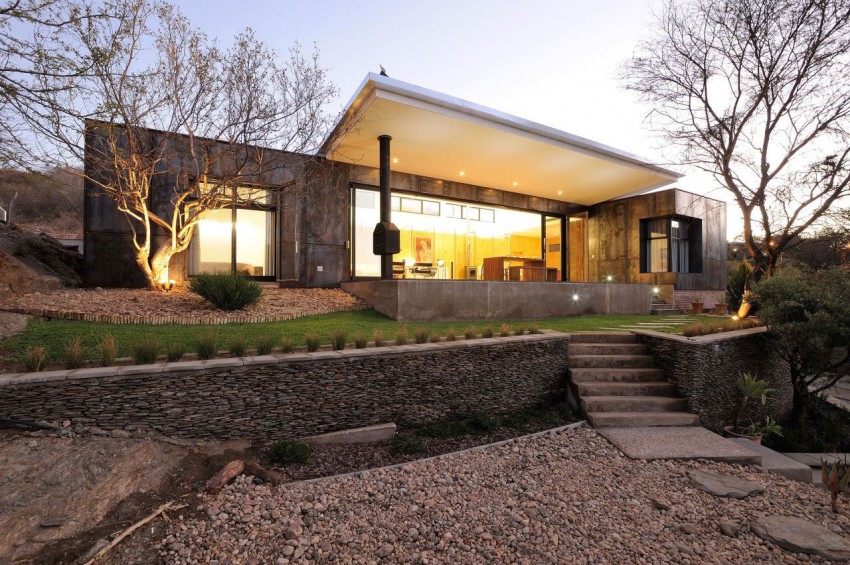
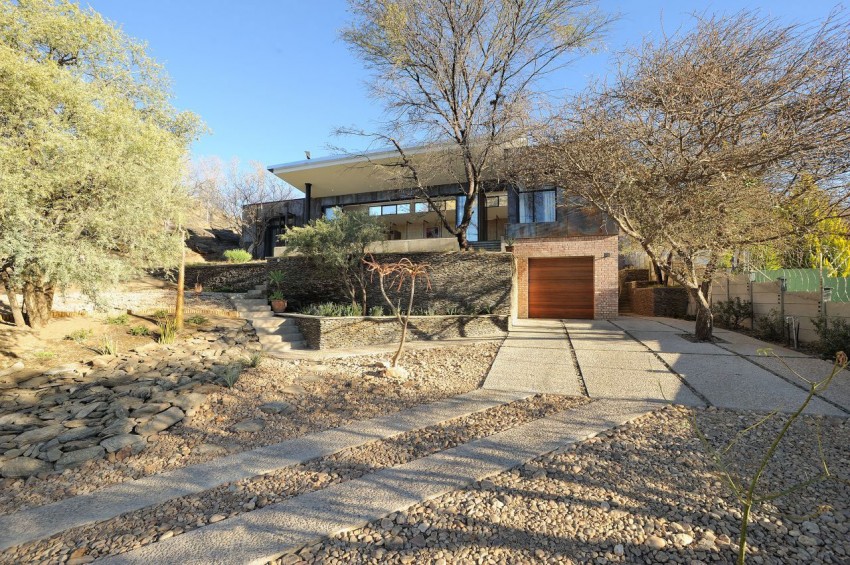
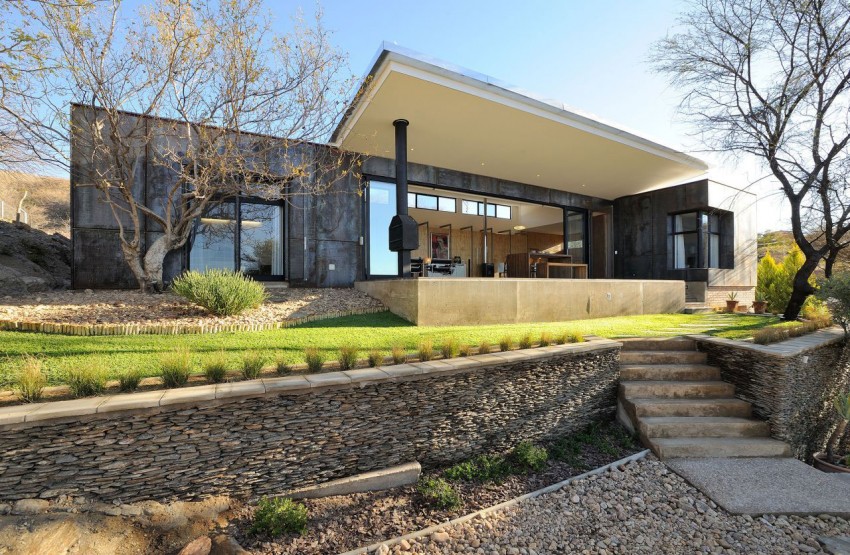
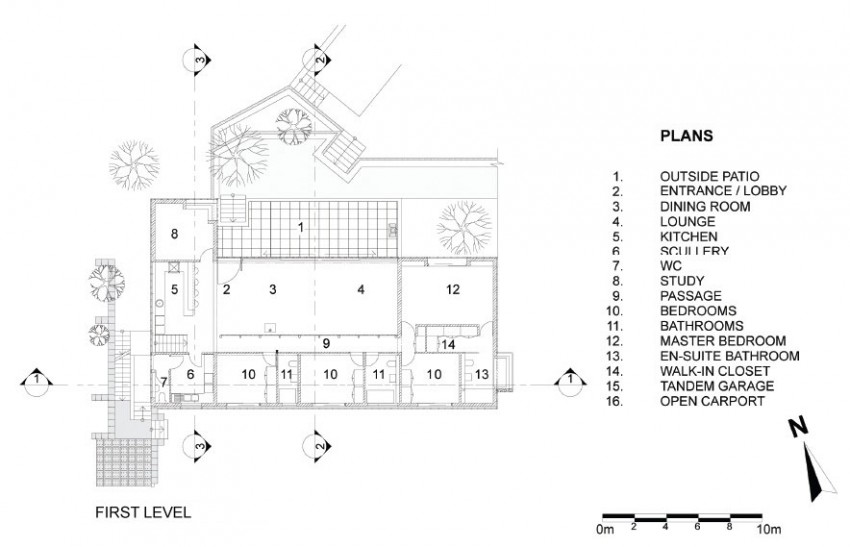
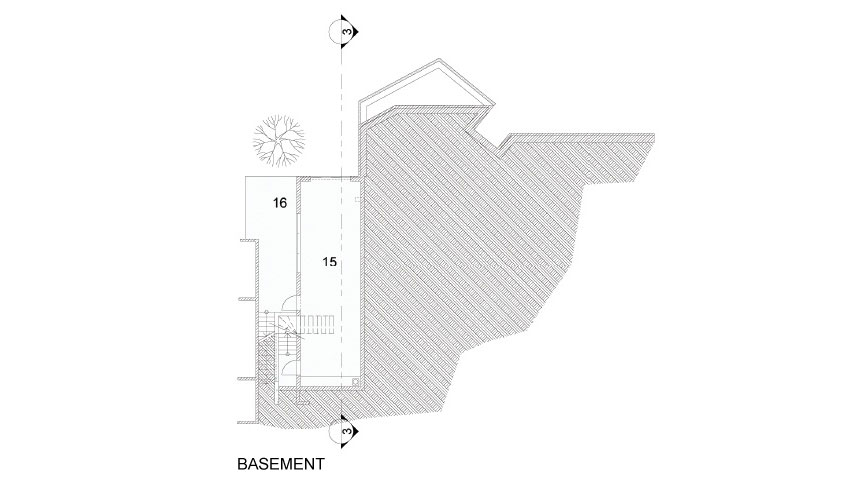
Architecture belongs to the site.
The refurbishment of a tired 1950’s residence in the verdant suburb of Klein Windhoek offered an opportunity to explore the intimate spaces required for living against a fixed plan template of the existing, while simultaneously re-establishing connections to the site, broader landscapes and contexts.
Completed in April 2013, the house is reinterpreted as a pavilion set on a steep embankment within a tranquil oasis of indigenous acacia trees. Designed for near-empty nesters, the key challenge was to create flexible space for living and relaxation – breathable space with ready access to the outdoors – packaged as a low-maintenance lock-up-and-go but with a couple of extra bedrooms for come-and-go adult children.
Prominent features of the site include a rocky ‘koppie’ that separates the house from the neighbouring residence and a pronounced fall towards the north. Located on the highest portion of the site, the house enjoys north orientation and beautiful views across the Klein Windhoek valley.
In a neighbourhood of a somewhat non-descript character, the next-door Munting residence provided salient architectural clues, particularly insofar as the choice of a limited palette of materials and finishes was concerned: clay bricks, off-shutter and exposed aggregate concrete, mica stone and rusted steel. In contrast to the robust exterior, the interior of the building is enveloped by the warmness of its plywood linings, partitioning and built-in cupboards.
Ill-considered alterations and additions to the old house over the years made for an impractical and incoherent plan layout. The intervention brings a sense of programmatic clarity and simplicity, and attempts to create simple, robust spaces to live in. The double-volume living area with its butterfly roof and clerestory windows to the south is the heart of the house: sliding doors open to a large terraced patio overlooking the garden and affording panoramic views of the distant mountains. The kitchen too has windows framing the trees in the garden outside.
Passive design principles employed include a ventilated steel-clad façade, solar water heating and appropriate shading devices. All stone used are from the site; precast concrete fence panels were reused as stepping-stones across the lawn; the front door is a salvaged prison gate; the clay brick used is from a rehabilitation project where clay is extracted from old mine slime dams. Framed steel mesh panels are used for security and fencing.
The sensitivity with which the house imposes on the site is enhanced by the beautifully crafted mica stonewalls that link natural and man-made. Passage of time – rusty red walls and established vegetation – will allow the house further to settle within its surrounding landscape.
Photos by: Studio One & Markus Weiss
